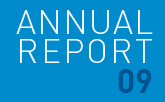- Dubai
- Brent
- WTI
- 32
- 38
- 40
- 30,88
- 32,86
- 33,68
- 33,69
- 38,27
- 41,49
- 49,54
- 54,52
- 56,59
- 61,52
- 65,14
- 66,02
- 68,27
- 72,39
- 72,20
- 93,56
- 96,99
- 99,56
- 44,12
- 43,59
- 41,75
- 50,10
- 50,34
- 49,82
- 64,82
- 64,61
- 64,10
- 73,15
- 72,75
- 75,73
- 76,73
- 74,73
- 73,43
The forecasts issued by various official bodies (the Energy Information Administration, the EIA, and the International Energy Agency, the IEA, among others) regarding worldwide demand in 2009 revised downwards their figures issued in previous months. At around this time OPEC undertook strictly to fulfil its cut in crude oil production of 4.2 million barrels per day, agreed the previous December in Oran.
Average prices rose by around 10% in the second week of May, driven by optimism on international stock markets raising expectations of an upturn in consumption. This was the first week that suggestions were made that the economic crisis in the United States had bottomed out.
OPEC did not wish to force the price of crude on the markets too far upwards, and agreed in Vienna at the end of the month to maintain the production quota.
Short-term indicators were less than optimistic and the stock of crude and derivatives in the USA higher than expected. The market hovered around $65/bbl, with considerable volatility.
Positive forecasts for demand in 2009 published by the IEA at the end of July sent the futures price rocketing to $75/bbl. There was a slight downturn in August to $70/bbl, with the market remaining at around this level over the coming months, within the now typical volatility.
At its meeting of 10 September, OPEC decided to maintain production quotas for the third time in 2009.
The economic indicators which had emerged since the summer were now generating fairly widespread optimism across the OECD economies. The arrival of positive indicators from the most important economies began to become a reality. Crude embarked on a slightly upward path.
The price of crude on the futures market approached $80/bbl by late October. Volatility remained, however, with the price holding over the following weeks within a band of $5-10 around the $70/bbl mark, up until mid-December.
At around this time the IEA issued an upward revision of worldwide crude oil demand from 2010 to 2014. This publication and the arrival of the first cold snap in the Northern Hemisphere drove oil prices to figures of around $80/bbl by the end of the year and in the early weeks of 2010.
For example, although crude stood at around $70/bbl for much of 2009, the price of natural gas behaved differently: on 2 december 2009 it was quoted at just $4.40/MMBtu, although it then did move slightly upwards to a level of $5.27/MMBtu by the middle of the month, and $5.81/MMBtu by mid-January 2010.

-
 ENAGAS
ENAGAS

